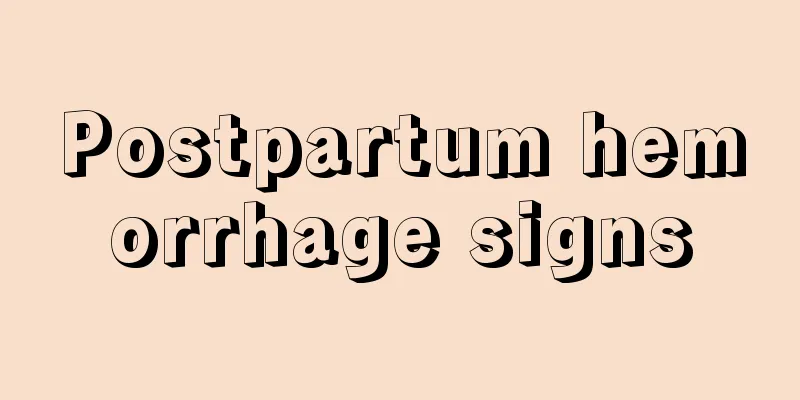Postpartum hemorrhage signs

|
There are several main reasons for postpartum hemorrhage, among which the most important and common is poor uterine contractions, which accounts for a large proportion of postpartum hemorrhage. Poor uterine contractions after childbirth cause postpartum hemorrhage and have precursor manifestations. First, after childbirth, we touch the fundus of the uterus through the abdomen and can feel that the uterus is relatively large and soft. Normal uterine contractions will quickly contract and shrink after giving birth, and will become smaller and harder. If your uterus feels like a flour bag, it may be a sign of poor uterine contractions. Secondly, vaginal bleeding will gradually increase, which is a sign of internal bleeding. Finally, damage to the soft birth canal can also cause internal bleeding after childbirth. We need to fully examine the birth canal of the pregnant woman to see if there are any torn wounds. In addition, the remnants of the embryo, fetus and membrane can also cause postpartum hemorrhage. We need to check whether the discharged embryo and fetal membrane tissue are complete, and also check the coagulation to see if there is any coagulation obstruction causing postpartum hemorrhage. The common causes of internal bleeding in women include medical abortion, surgical abortion, cesarean section and natural birth. The main cause of internal bleeding is poor uterine contraction. Generally, vaginal bleeding is easy to ignore after medical abortion or surgical abortion. A small amount of vaginal bleeding will occur after medical abortion or surgical abortion, which will last about a week, and the blood volume will not exceed the menstrual volume. Signs of internal bleeding: If vaginal bleeding does not decrease significantly but increases, and is accompanied by a large amount of blood clots, it indicates that it is abnormal and it is possible that there is excessive uterine bleeding. You should go to the hospital for a physical examination immediately. It may be because there is residue in the uterus that affects uterine contractions. If necessary, uterine curettage surgery is needed. |
<<: Postpartum bleeding in stool anal pain
>>: Postpartum belly relaxation massage technique
Recommend
Two days after giving birth, I still haven't gotten any milk
It is normal not to have milk production one or t...
Can Candida albicans be cured during pregnancy?
Pregnancy is a special period when the immune sys...
The worst symptoms of menopause
The menopause issue has always been a topic that ...
How long does implantation backache last?
If a woman is healthy and has sex during the ovul...
Is it true that eating goose eggs can remove fetal toxins?
Fetal toxicity, that is, acute allergic reaction ...
The relationship between the uterus and ovaries is like this
The uterus and ovaries are both important reprodu...
Who created Ba Duan Jin? When is the best time to practice Ba Duan Jin?
Ba Duan Jin is an independent and complete set of...
How many milliliters is the normal menstrual volume?
Menstruation is the regular shedding and bleeding...
How to check the cleanliness of vaginal discharge
Some female friends have carefully studied the cl...
What precautions should be taken after tooth extraction during breastfeeding?
There are many kinds of dental diseases that may ...
What are the causes and treatments for postpartum seizures?
The convulsions that people often talk about actu...
Be careful of these symptoms after pregnancy. Panic is a big problem.
During pregnancy, you should pay close attention ...
National Eye Care Day | Yu Jinguo: Analysis of common misunderstandings in the prevention and treatment of diabetic retinopathy
Editor's Note: June 6, 2024 is the 29th Natio...
Beware of these diseases during the flower viewing season. They are more common in spring and summer.
Spring is in the air, and many people choose to g...
Will endometrial polyps disappear?
Endometrial polyps will disappear after active tr...









